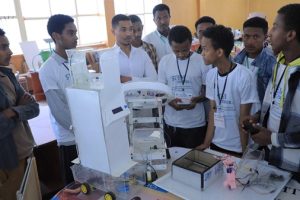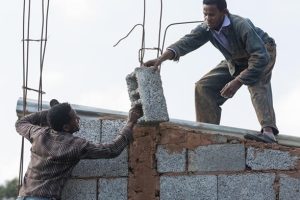
BY SEMIRA BERHE
In developing countries, like Ethiopia, complications, associated with pregnancy and childbirth are more common than developed countries. Especially, in areas where access to maternity care (throughout pregnancy, during childbirth and in postpartum period) is out of reach; and there is no a skilled attendant during childbirth, the risk is the highest.
According to a research conducted in 2017 by World Health Organization (WHO), globally 295 thousands of mothers lose their lives every year during pregnancy, delivery and postpartum; which is 810 in a day. Sadly enough, out of this, 94 percent of the deaths occur in developing countries.
For instance, in developing countries, while the rate of maternal death is 462 per 100 thousand births, in the developed countries the rate is 11 per 100 thousand births.
When we come to our country, 14 thousand deaths occur annually; and 38 deaths occur daily due to pregnancy and childbirth related complications, as to documents.
Among the causes of mothers’ death, heavy bleeding during pregnancy and childbirth, high blood pressure, infection and obstructed labor, are said the common ones. Especially, in rural areas delays – to go to health posts during labor; and receive the required care are highly contributing to maternal deaths and complicated health problems.
The first delay is recognizing the need to seek care. This means mothers do not have adequate information about getting clinical services, and have wrong attitudes about the service. Aside from that, mothers’ decision making capacity in the family being low is also impacting their wellbeing hugely.
The second delay is infrastructure related challenges. The health facilities being far from areas where the villagers are residing; and absence of suitable transport system are also contributing to the delay which results in complications during pregnancy and childbirth.
The last delay to mother’s death is shortage of medical equipment in the hospitals, professionals and others.
To contain such risks that come to happen due to preventable causes, therefore, January is dedicated as the month of “Safe Motherhood Month’ to raise the awareness of the general public about preventable causes of maternal death, increase access to quality maternal health services, thereby preventing the risk of a woman dying due to pregnancy and childbirth related challenges.
Currently, the month is being commemorated throughout Ethiopia for the 17th time with a theme “Let’s end preventable maternal death together by conducting various awareness raising activities focusing on mothers’ from pregnancy to due date and after giving birth.
As part of this effort, several undertakings including mentorship and supportive supervision activities as well as exploring hospitals in rural area are ongoing.
Among the major initiatives carried out to curb mothers’ death is the establishment of maternity waiting centers close to hospitals or health centers in all states of Ethiopia. So far, more than 2 thousand maternity waiting centers are prepared for mothers to stay there two weeks before their due date and after delivery as needed.
Maternal Health Desk Coordinator with the Ministry of Health (MoH), Zamzam Ahmed said that the idea of establishing maternal waiting centers was first initiated about a decade ago to support the society who live in rural areas; far from hospitals.
As to this same study conducted by WHO in 2016, from all health centers located across the country, 54 percent of the institutions have maternal waiting center and at this time, the number has increased by 64 percent for the reason the centers are instrumental to decrease mothers’ death in rural hospitals while giving birth.
As she explained, the maternal waiting centers are community owned facilities built by the community. Owing to this, they represent the society’s culture; which allows mothers to feel at home.
Mentioning that each center has two parts: prenatal and postnatal rooms; and a kitchen, she said that the centers also stuffed with the collection of essential supplies and items for the mothers like food from the community.
For instance, in places with high production of coffee, the coffee donated by the society would be sold and substituted by other essential products for the mothers.
Senior Public Health Expert and Maternal Health Case Team Officer with MoH Shelmew Bominesa said that the pilot project of maternal waiting center was first tested in the southern part of the country, Arba Minch and Gedio Zone hospitals. After it showed encouraging result, the experiences were scaled up to other parts of the country. He added that the scheme is community participatory program. The initiative is managed by the committee organized in the health center. So, the communities have a big role in taking care of mothers in the centers.
As to him, pregnant mothers stay in the center before and after delivery in accordance with their health status and the distance of their home from the health center. The waiting center in Silte Zone has bought auto rickshaws with the money donated by the community to be used for income generation and transportation for the mothers.
The other exemplary activity in some community is that they have a chief. After completing their stay in the waiting centers, midwifery nurses visit mothers and the newborn babies door to door on daily and weekly basis.
The MoH has prepared the initiative program, standards of the center and give training to the district administrators and health center professionals to work together.
He added that there are many challenges mothers face despite having interest to come to the waiting centers. One of the main challenges is limitations in family planning system. Mothers are always overburdened with household chores including caring children. Since they have to look after the other children too, they fail to visit waiting centers.
The professionals said that waiting centers have two important lessons. The first one is encouraging mothers to institutional deliveries; and breaking the old trend of mothers giving birth at home; and the other one is minimizing maternal deaths during prenatal and postnatal time.
The United Nations set a plan to cut maternal mortality to less than 71 per 100 thousand live births by 2030.
In Ethiopia, the MoH is striving to reduce maternal deaths to less than 140 deaths per 100,000 live births by expanding health centers, improve ambulance service and creating awareness to mothers about maternal health and building a healthy family.
THE ETHIOPIAN HERALD SUNDAY EDITION 22 JANUARY 2023





